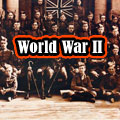Home | Living With War | Social Changes for Albertans
Social Changes for Albertans
Canadians supported the war effort and while they suffered many loses and hardships few questioned the necessity of the war. Sacrifices on the battlefield and on the Homefront were now a part of daily life for all Canadians and Albertans.
Albertans experienced significant social, cultural and economic changes that impacted every aspect of their lives during the war. Certain privileges and basic amenities previously taken for granted were no longer guaranteed or readily available.
The to and fro of military and civilian personnel, including those from different countries, had a profound impact on Alberta’s cities and towns. At times local authorities had difficulty maintaining law and order. Servicemen on leave provided a much needed economic boast to many local businesses, but could also cause considerable trouble, including harassing and accosting local women, damaging property, assaulting other patrons and uttering inappropriate remarks.
The presence of ethnic populations from enemy countries - Germany, Italy, and Japan – sometimes led to hostility and tension among long time citizens and new arrivals. Some Albertans proved to be overly zealous in their attempts to support Canada’s war effort and unfairly labelled or accused German, Italian and other non-Anglo or Francophone Canadians of supporting the enemy.
The large influx of large military personnel into Alberta's communities saw an unanticipated rise of sexually transmitted diseases and an increase in the number of "illegitimate" babies. Rates venereal disease (VD) at one point registered 30 cases per 1,000 men in Calgary and Edmonton. The number of babies born to single mothers rose by roughly forty percent between 1939 and 1943; from 617 to 886. Many of these babies ended up in foster homes or were put up for adoption.
The traditional structure of the family changed dramatically during the course of the war. Notably, women entered the workforce in large numbers. This presented many women with the new challenge of raising a family, maintaining a home, working out of the house and/or managing the family business or farm.
During the war years, the need for work outweighed the desire for education. Many students abandoned their studies to contribute directly to the war effort. Attendance among teenagers (from rural areas) dropped by nearly fifty percent as students left school to assist in the farm fields or find work in cities. Ironically, this was also the era when cities such as Calgary and Edmonton built modern educational facilities, complete with gymnasiums, industrial art classrooms, and theatrical programs.
A lack of adult supervision led to increased rates of juvenile delinquency. Alberta's youth were charged with loitering, trespassing, gambling and drinking. The number of arrests, however, decreased in 1944 with an increase in the number of returning war veterans.
The government encouraged community participation in sports during the war years as part of a broader health and fitness campaign. Hockey, soccer, baseball, and curling leagues and organizations formed throughout the province. Many of these leagues included teams comprised of members of the military. In Lethbridge, for example, the 20th Anti-Tank Battery (Royal Canadian Artillery) formed its own hockey and baseball teams to compete with other local clubs. POW internees in Lethbridge also formed an impromptu club to compete against other squads. The matches were well-attended, spirited affairs pitting the Allies against the Axis Powers. Sports proved to be very useful in bringing the two communities—military and civilian—together.
Editor's Note
For a more in-depth overview of social changes during the Second World War, see “Morale and Morality on the Alberta Homefront” by Jeff Keshen.
Reference
Keshen, Jeff. “Morale and Morality on the Alberta Homefront”, in Saints, Sinners, and Soldiers, ed. Jeff Keshen. Vancouver: UBC Press, 2004.








